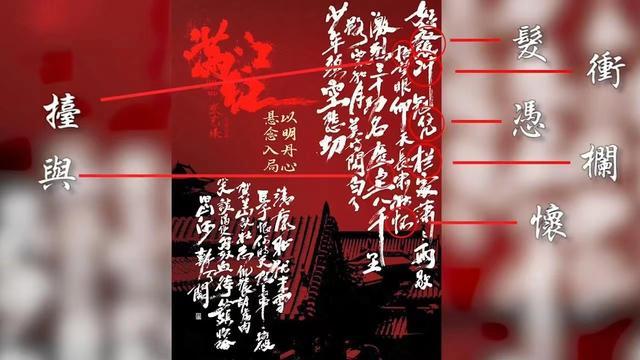иҜҘзұ»з»§жүҝдәҶContextLoaderпјҢ并йҖҡиҝҮcontextInitializedж–№жі•жү§иЎҢдәҶеҲқе§ӢеҢ–(дј е…ҘServletContext)пјҢйҖҡиҝҮcontextDestroyedж–№жі•иҝӣиЎҢиө„жәҗй”ҖжҜҒеӣһ收 гҖӮйҮҚзӮ№зңӢContextLoaderж–№жі• гҖӮ
ContextLoaderеңЁеҲқе§ӢеҢ–ж—¶пјҢдјҡе…Ҳжү§иЎҢеҶ…йғЁзҡ„дёҖдёӘйқҷжҖҒд»Јз Ғеқ—пјҡ
private static final Properties defaultStrategies;static {try {ClassPathResource resource = new ClassPathResource(DEFAULT_STRATEGIES_PATH, ContextLoader.class);defaultStrategies = PropertiesLoaderUtils.loadProperties(resource);}catch (IOException ex) {throw new IllegalStateException("Could not load 'ContextLoader.properties': " + ex.getMessage());}}иҝҷдёҖжӯҘдјҡеҠ иҪҪclasspathдёӢзҡ„й…ҚзҪ®ж–Ү件ContextLoader.propertiesпјҢиҜҘж–Ү件е°ҶдҪңдёәй»ҳи®Өй…ҚзҪ®з”ЁдәҺеҲқе§ӢеҢ–PropertiesеҜ№иұЎdefaultStrategies гҖӮ
3.1.1. contextInitialized contextInitializedж–№жі•зҡ„дё»иҰҒеҶ…е®№еҰӮдёӢпјҡ

ж–Үз« жҸ’еӣҫ
иҝҮзЁӢдёәпјҡ
(1) еҲӨж–ӯеҪ“еүҚContextжҳҜеҗҰе·Із»ҸеҲқе§ӢеҢ–иҝҮ
йҖҡиҝҮеҲӨж–ӯServletContextдёӯжҳҜеҗҰеӯҳеңЁkeyдёәorg.springframework.web.context.ROOTзҡ„еҖј
- еҲқе§ӢеҢ–WebApplicationContextпјҡд»ҺContextLoader.propertiesдёӯжҹҘжүҫWebApplicationContextзҡ„е…·дҪ“е®һзҺ°пјҢеҰӮдёӢпјҡ
org.springframework.web.context.WebApplicationContext=org.springframework.web.context.support.XmlWebApplicationContextеҚіXmlWebApplicationContextпјҢ然еҗҺеҲқе§ӢеҢ–иҜҘзұ»(2) й…ҚзҪ®е№¶еҲ·ж–°иҜҘXMLWebApplicationContext
XMLWebApplicationContext继жүҝз®ҖеӣҫеҰӮдёӢпјҡ

ж–Үз« жҸ’еӣҫ
еұӮзә§жҜ”иҫғжҳҺжҳҫпјҢжң¬иә«д№ҹжҳҜдёҖдёӘRefreshableConfigApplicationContext(е…·дҪ“еҶ…е®№еҸҜд»ҘзңӢеҫҖжңҹеҶ…е®№) гҖӮе…¶зҲ¶зұ»дҝқеӯҳдәҶServletContextе’ҢServletConfigдёӨдёӘWeb Contextзӣёе…ізҡ„еҜ№иұЎпјҢе…¶жң¬иә«д№ҹз»ҙжҢҒдәҶдёҖдәӣй»ҳи®ӨеұһжҖ§пјҢеҰӮ
DEFAULT_CONFIG_LOCATION = "/WEB-INF/applicationContext.xml";иҝҷдёӘеұһжҖ§е°ұжҳҜй»ҳи®Өзҡ„Springй…ҚзҪ®ж–Ү件зҡ„и·Ҝеҫ„ гҖӮйңҖиҰҒжҢҮеҮәзҡ„жҳҜXMLWebApplicationContextйҮҚеҶҷдәҶзҲ¶зұ»зҡ„loadBeanDefinitionsж–№жі•
@Overrideprotected void loadBeanDefinitions(DefaultListableBeanFactory beanFactory) throws BeansException, IOException {// Create a new XmlBeanDefinitionReader for the given BeanFactory.XmlBeanDefinitionReader beanDefinitionReader = new XmlBeanDefinitionReader(beanFactory);// Configure the bean definition reader with this context's// resource loading environment.beanDefinitionReader.setEnvironment(getEnvironment());beanDefinitionReader.setResourceLoader(this);beanDefinitionReader.setEntityResolver(new ResourceEntityResolver(this));// Allow a subclass to provide custom initialization of the reader,// then proceed with actually loading the bean definitions.initBeanDefinitionReader(beanDefinitionReader);loadBeanDefinitions(beanDefinitionReader);}protected void loadBeanDefinitions(XmlBeanDefinitionReader reader) throws IOException {String[] configLocations = getConfigLocations();if (configLocations != null) {for (String configLocation : configLocations) {reader.loadBeanDefinitions(configLocation);}}}@Overrideprotected String[] getDefaultConfigLocations() {//Tip:иҝ”еӣһй…ҚзҪ®ж–Ү件и·Ҝеҫ„if (getNamespace() != null) {return new String[] {DEFAULT_CONFIG_LOCATION_PREFIX + getNamespace() + DEFAULT_CONFIG_LOCATION_SUFFIX};}else {return new String[] {DEFAULT_CONFIG_LOCATION};}}иҝҷйҮҢз”ЁдәҶXmlBeanDefinitionReaderжқҘи§ЈжһҗBeanе®ҡд№үпјҢдё”жҢҮе®ҡдәҶй…ҚзҪ®ж–Ү件зҡ„еҠ иҪҪйҖ»иҫ‘пјҢgetConfigLocationsж–№жі•пјҡеҰӮжһңзҲ¶зұ»зҡ„configLocationsдёҚдёәз©әпјҢеҲҷиҝ”еӣһиҜҘеҖјпјҢеҗҰеҲҷиҝ”еӣһgetDefaultConfigLocationsзҡ„еҖј гҖӮиҖҢgetDefaultConfigLocationsж–№жі•йҖ»иҫ‘дёәпјҡеҰӮжһңеӯҳеңЁе‘ҪеҗҚз©әй—ҙпјҢеҲҷиҝ”еӣһ/WEB_INF/namespace.xmlдҪңдёәй…ҚзҪ®ж–Ү件пјҢеҗҰеҲҷиҝ”еӣһ/WEB-INF/applicationContext.xml гҖӮеҜ№еә”дёҠйқўзҡ„demoпјҢе°Ҷиҝ”еӣһй…ҚзҪ®дёӯзҡ„ж–Ү件пјҲеҗҢй»ҳи®ӨеҖјзӣёеҗҢпјү гҖӮXMLWebApplicationContextзҡ„еҲқе§ӢеҢ–жӯҘйӘӨдёәпјҡ
- иҜ»еҸ–contextIdй…ҚзҪ®пјҢиҝӣиЎҢи®ҫзҪ®
- иҜ»еҸ–contextConfigLocationй…ҚзҪ®пјҢдҪҝз”ЁжҢҮе®ҡзҡ„й…ҚзҪ®ж–Ү件пјҢиӢҘжІЎжңүеҲҷдҪҝз”ЁдёҠйқўжҸҗеҲ°зҡ„й»ҳи®Өй…ҚзҪ®ж–Ү件DEFAULTCONFIGLOCATION
- еҠ иҪҪcontextInitializerClassesжҢҮе®ҡзҡ„classпјҢз”ЁдәҺеңЁcontextеҲ·ж–°еүҚжү§иЎҢиҮӘе®ҡд№үеӨ„зҗҶ
- и°ғз”ЁXMLWebApplicationContextзҡ„refreshж–№жі•
йҖҡиҝҮе°ҶиҜҘж №ContextеӯҳеңЁServletContextдёӯпјҢ并и®ҫзҪ®еҖјдёәorg.springframework.web.context.ROOTпјҢз”ЁдәҺ第(1)жӯҘзҡ„еҲӨж–ӯ
3.1.2. contextDestroyed й”ҖжҜҒиҝҮзЁӢжҜ”иҫғз®ҖеҚ•пјҢйҰ–е…Ҳи°ғз”ЁWebApplicationContextзҡ„closeж–№жі•й”ҖжҜҒиҜҘContextпјҢ然еҗҺ移йҷӨServletContexдёӯзҡ„org.springframework.web.context.ROOTеұһжҖ§еҖјпјҢжңҖеҗҺжё…йҷӨServletContextдёӯжүҖжңүorg.springframework.ејҖеӨҙзҡ„еұһжҖ§еҖј гҖӮ
3.2. DispatcherServletзҡ„еҠ иҪҪ еҗҢContextLoaderListenerзұ»дјјпјҢDispatcherServletдҫқиө–дәҺServletиҝӣиЎҢжү©еұ• гҖӮDispatcherServletзҡ„з»“жһ„еҰӮдёӢпјҡ
жҺЁиҚҗйҳ…иҜ»
- еңЁж·ҳе®қејҖеә—жөҒзЁӢ ж·ҳе®қзҪ‘еә—жҖҺд№ҲејҖзҡ„жөҒзЁӢ?
- ејҖж·ҳе®қзҪ‘еә—зҡ„жөҒзЁӢ ж·ҳе®қеә—й“әејҖи®ҫжөҒзЁӢ
- ж·ҳе®қеә—й“әжҖҺд№ҲејҖеә—жөҒзЁӢ ж·ҳе®қејҖеә—зҡ„е…·дҪ“ж“ҚдҪңжөҒзЁӢ
- ж·ҳе®қејҖеә—зҡ„е…·дҪ“ж“ҚдҪңжөҒзЁӢ ејҖж·ҳе®қеә—зҡ„жөҒзЁӢе’ҢжӯҘйӘӨ
- е…¬еҸёеҗҚз§°ж ёеҮҶжөҒзЁӢжҳҜжҖҺд№Ҳж ·зҡ„ дјҒдёҡеҗҚз§°йў„е…Ҳж ёеҮҶз”іиҜ·д№Ұ
- иҢ¶иЎҢдёҡеҰӮдҪ•еҲ©з”Ёе…ЁжөҒзЁӢжңҚеҠЎдҪ“зі»е®һзҺ°е“ҒзүҢзӘҒеӣҙ
- ICPи®ёеҸҜиҜҒз”іиҜ·жөҒзЁӢ
- 2020ж·ҳе®қејҖеә—жөҒзЁӢеҸҠиҙ№з”Ё ејҖж·ҳе®қеә—иҰҒй’ұеҗ—2020
- гҖҗе©ҡзӨјжөҒзЁӢиЎЁгҖ‘е©ҡзӨјеҪ“еӨ©зҡ„иҜҰз»ҶжөҒзЁӢиЎЁ
- ејҖж·ҳе®қеә—й“әйңҖиҰҒд»Җд№ҲжөҒзЁӢ ејҖи®ҫж·ҳе®қеә—зҡ„дё»иҰҒжөҒзЁӢ

















